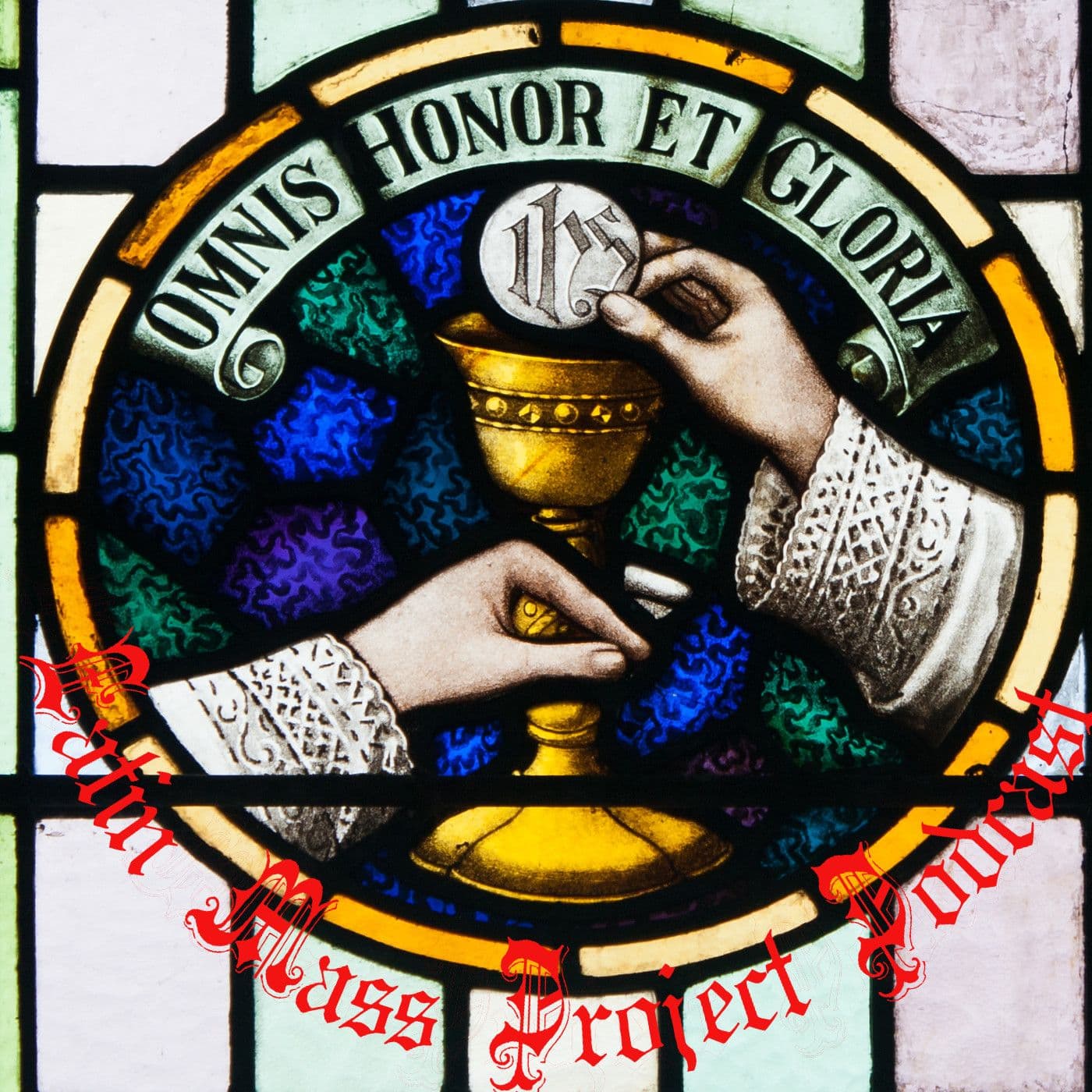Religion & Spirituality
Your browser does not support the audio element. Podcast (17m21s): Play in new window | DownloadThe Drama of the Mass: Written into Church Buildings Episode one concluded with a brief mention of the role of drama in the Mass. The Mass is that sacramental (or mysterious) sacrifice Jesus that breaks down the divisions between God and man by pleasing the Father so much, through the obedience of His Son on the altar, that it more than makes up for the debt of sin. Since this is not a bloody, but a sacramental, sacrifice, the death of the Lord is made present not through the blood and glore of the cross, but through the double consecration of the bread and the wine, and through all of the details of the Mass which act as a dramatic representation of that sacrifice. The symbols and drama of the Mass speak not only of the sacrifice of Christ, but also of the unity that God wants to establish between heaven and earth, between God and all of creation, “in the fullness of time, to unite all things in Christ, to restore things in heaven and on earth” ( Eph. 1:10). This Drama is Built Right Into the Church BuildingThe archetypal church building is positioned as if at the center of all of creation. It faces the East, the rising sun, which points to Christ, and it is often shaped like a cross, for through the cross is the "reconciliation of all things, whether on earth or in heaven, by making peace through His blood" (Col. 1:20). On the far eastern wall, which represents Heaven, is placed a cross, for we have access to the Father only through Jesus. Often the reredos or altar piece is built in the fashion of a gate. On it is placed the likenesses of angels and saints. The ceiling is sometimes filled with stars. The walls and pillars often have the likenesses of vegetation, as if this were a garden. It is like the church building is a mini-cosmos, a microcosm.We, at the crux between heaven and earth, occupy a unique position in the plan of God. We are spiritual beings, persons with free will and understanding. We are bodily beings. Unlike rocks and stars, we must fulfill our nature voluntarily and so give glory to God. Unlike angels, our nature is biological and material. "You made man a little lower than the angels. You crowned him with glory and honor" (Ps. 8:5).Taking up our place in the cosmos, we worship God both "in spirit and in truth" (Jn 4.:24) and also with our bodies. Our bodies enter into the divine worship. They serve to "make visible the invisible, the spiritual and the divine" (St. John Paul II) and to help effect mystically the worship of God, the propitiatory sacrifice, and plan of God for union of all things in Christ. This Is Called “Sacramentality”When we hear the word "sacrament", we're used to thinking about the seven sacraments. But there is a broader sense of the word too, and we get the word "sacramental" from this. Something is sacramental when it represents and helps to bring about a reality beyond itself. This is also part of what we've been calling the drama of the Mass. By things like water, incense, statues, icons, and so forth, in the Church and the Liturgy we made present the plan of God: our salvation. The Body Has a Special Role in SacramentalityWe praise God as male and female (cf. 1 Cor. 11), and we praise God by what we do with our bodies. By baptism, we die with Christ, are raised to newness of life, and adopted as His children. In the Mass, it is in the reception of the Most Holy Sacrament that the sacrifice is brought to completion, and so the Blessed Sacrament is received, according to the formula of the East "for the the remission of sins and for life everlasting."These are big ways that our body participates in the worship of God. There are also smaller, but not unimportant details.We kneel to show adoration and beg for mercy. We genuflect and bow as a sign of honor or adoration, and of reverence to God and His Saints. We stand as a sign of our dignity as children of God and our willingness to march forward as part of the army of God. The priest raises his hands in the orans position as a sing of praying, when he is praying on our behalf. We fold our hands as a sign of submission to God when we pray. We make the sign of the cross as sign of faith, as a prayer for God's blessing, and as a minor exorcism against the devil. The priests blesses with the sign of the Cross to set something apart from divine service. The priest also makes the sign of the cross to indicate that something is holy. There are many more gestures, postures, symbols, etc, that we do as part of the Western, Latin tradition of Catholicism. Doing these gestures is a form of prayer. They help to form us. But prayer is also interior. Doing what is exterior helps to form the interior habits, but praying interiorly gives meaning and power to these external actions. In this way, there is an reciprocal relationship between how we pray exteriorly and how pray interiorly. The two together participate in our worship of God and help to sanctify us.GuestsMichael and Joseph are joined by Aaron for today's podcast. Aaron is a founding board member and official photographer of Juventutem Michigan the first Juventutem group in the United States. He is a cantor and organizer of multiple Gregorian chant workshops.

